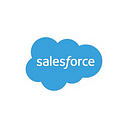Building for the AppExchange: 8 Things You Should Know
If you have already made the decision to build an app in Salesforce’s AppExchange, inevitably there will be many decisions and considerations to make along the way. Here are the top eight areas you should pay attention to as you build your app.
Why Absorb LMS Built a Salesforce App
So, why did an LMS company build an app for Salesforce? For us at Absorb, it was the logical next step. We wanted to improve the client experience and leverage the functionality of a CRM to empower organizations to reduce their workload and increase the efficiency of their day-to-day tasks. Our team worked with Appiphony, a Product Development Organization (PDO), to get our app in the AppExchange in time for a launch at Dreamforce.
1. Become Familiar with Salesforce’s Functionality
In order to build an industry-leading app, you need to understand the Salesforce system and the feature set it offers. This will provide some insight on how to best align your software solution within Salesforce. After extensive research into Salesforce’s functionality, we went through numerous iterations of how we wanted to build our app before we established our ideal feature set. Next, we collaborated with Appiphony to further refine the scope and complete one more iteration, prior to starting development.
2. Understand Your Clients’ Use Case
Our promise at Absorb is to build software that is intelligently crafted for our clients. As part of our scoping process, we conducted client interviews to determine how each organization takes advantage of Salesforce, regardless of industry vertical or size. By booking use case discussions, we could talk with our clients who use both Salesforce and Absorb LMS. This allowed us to assess what pieces of functionality would be best implemented as part of the application. These meetings also provided a broader picture of how to structure a solution-driven application that also gives users the power they are looking for, including the need to do unexpected things.
3. Plan for Your Security Review
If you’re looking ahead at your calendar and preparing to get your app out the door on a tight deadline, you will want to take the security review into consideration. The process can take up to 8 weeks, and can only begin once your app and supporting documentation are complete, you’ve met all Salesforce’s requirements, and are within the agreement guidelines. Ensure you plan to have your development team highly responsive to the Salesforce review process; this will reduce the risk of a delayed launch.
4. Create a Pre-Launch Marketing Campaign
You almost have an app, and it is about to pass security review, but do you have a go-to-market strategy? Once you have a confirmed feature set for your app, collaborate with your sales and marketing teams to discuss internal timelines and build out a campaign for an effective launch. Determining your marketing strategy early on is pivotal to the success of your new product.
5. Develop Internal Training Resources
Training your client-facing team is crucial to ensuring that new clients are receiving exceptional support. Plan to work with your technical writer or information services team to build support materials, schedule internal demos and create an accessible communication channel to answer any questions that bubble up. This will empower your team to confidently support your app once it is released.
6. Engineer Invoicing & Internal Accounting Workflows
As you may already know, invoicing is not straightforward. Work with both sales and accounting to establish a workflow that incorporates your new app into your existing suite of products. You will need to consider promotional incentives and discounts when building out invoices, and how you will arrange to have Salesforce notified of new installs through the COA. Make sure you complete a few mock transactions to mitigate any issues with your workflow prior to launch.
7. Assemble Contracts & Legal Documentation
Hand-in-hand with your invoicing and accounting will be the need to assemble contracts and legal documentation. Work with your legal team to review your partner agreement, and then build out your own contract for clients to sign. You may decide to include this as an appendix to your main product’s terms and conditions as opposed to a separate contract.
8. Prepare for Life After Launch
Your app may be launched, however, there is still work to do. As with any product, there will be bugs to fix, updates to release, and the ongoing maintenance of supporting documentation. Not to mention the testing of your app against all Salesforce releases. Ensure you have planned appropriate resources and have processes in place to effectively maintain your new product.
Along with this, make sure to work closely with your ISV Partner Account Manager to navigate the challenges ahead. Best of luck on your journey to becoming a Salesforce partner!
About Absorb LMS: As PC Magazine’s Editors’ Choice for Best LMS, Absorb LMS can be used to train internal employees, external customers and partners — or both. Learn more here.
Editor’s note: Learn more about Jennifer’s story in her recent webinar and in our latest webinar, 5 Stories of AppExchange Partner Success.

